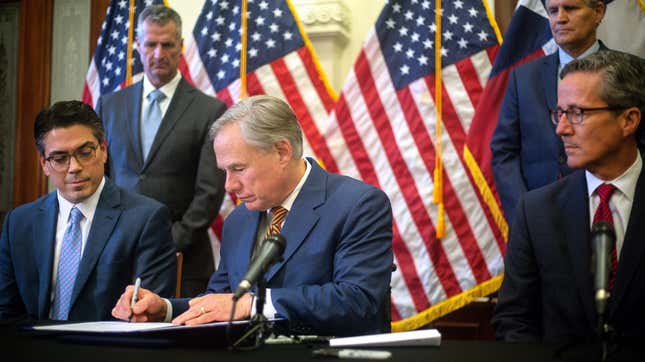
Apparently, Texas’ energy grid is not only ill-equipped to handle cold weather. It’s also incapable of withstanding heat. The increasingly ironically named Electric Reliability Council of Texas (ERCOT) is now asking customers to conserve electricity through Friday as hot weather grips the state (and much of the western U.S.).
Grid capacity is currently tight because it is experiencing a “significant number of forced generation outages,” the grid operator said in a Monday press release. Power plants with a combined capacity of 11,000 megawatts of power, or enough to run 2.2 million homes on a hot day, are currently offline for repairs. ERCOT plans to conduct an analysis on why so many plants aren’t functioning.
Though supply is in a dip, demand is increasing. Forecasters expect Texas temperatures to rise even further this week, and temperatures could crack the triple digits as they have on Monday. Interior parts of the state will see above-normal temperatures, including the heavily populated Dallas area. Though not nearly as extreme as the rest of the West, they could still send demand for electricity to new highs. ERCOT said it may see record-breaking electricity demand for the month of June as many residents are forced to stay home with air conditioners running on full blast.
In a last ditch effort to stave off version 2.0 of blackouts, ERCOT is asking customers to keep their thermostat at 78 degrees Fahrenheit (25.6 degrees Celsius), which seems a little balmy given the weather, as well as avoiding the use of large appliances and pool pumps. The operator also recommended unplugging anything that can be to conserve as much juice as possible.
For the record, the majority of the failing power isn’t renewables, but fossil fuels. More than 70% of the offline capacity comes from fossil fuel-fired power plants. More than 8,000 megawatts of fossil fuel energy are out of commission, which is more than double what ERCOT typically sees offline during peak energy demand. Meanwhile, wind output for Monday is expected to be 3,500 to 6,000 megawatts, which is just 1,500 megawatts lower than what is typically available for peak conditions. Seems it’s not clean power that’s the unreliable electricity source—imagine that!
The announcement from ERCOT comes just four months after the operator, which serves 90% of Texas, presided over forced outages throughout the state amid an unusual cold snap. Millions were without electricity, and the situation quickly turned deadly. The state reported that the blackouts resulted in 151 fatalities, but a BuzzFeed News analysis found the true number could be closer to 700. Despite the scrutiny brought on by this disaster—and the ample time it had to prepare for summer—the grid operator obviously still hasn’t done nearly enough to improve its dependability, which is truly shameful, because while the cold of February was highly uncommon for Texas, the southern state is no stranger to heat.
Prompted by the February outages, last week, Texas Gov. Greg Abbott approved two bills aimed at improving ERCOT’s reliability during extreme weather, claiming “everything that needed to be done was done to fix the power grid in Texas.” Clearly, that wasn’t the case.
Transforming the Texas grid so it’s ready for the changing climate is possible. To do so, the state must move quickly away from fossil fuels, not only because they’ve proved to be less reliable than wind power in Texas, but also because they’re fueling the crisis that’s leading to such extreme weather. The transformation must also include plans to improve energy efficiency and lower usage without putting people at risk.
It should also connect Texas’ electricity infrastructure to the rest of the country. Right now, Texas is the only state that has its own grid. The rest of the Lower 48 states is served by operators called the Eastern Interconnection and the Western Interconnection, providing a degree of resiliency in other states. When heat, cold, or other issues knock power offline in Texas, though, most of the state has no backup.
Just a month ago, ERCOT released an analysis that predicted summer would bring high energy demand. It had a warning, just as it did about the deep freeze, and yet here we are again. Texas’ energy system is largely unregulated and geared toward maximizing investor-owned utilities’ profits instead of keeping people comfortable and safe. It’s becoming increasingly clear those priorities are incompatible with grid reliability. If Texans are ever going to have truly dependable power, things are going to have to change.